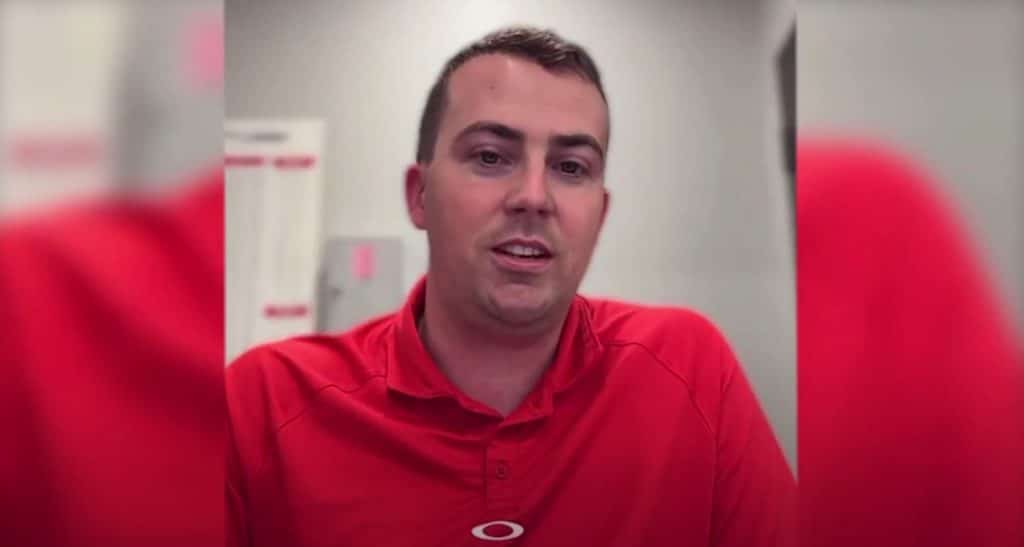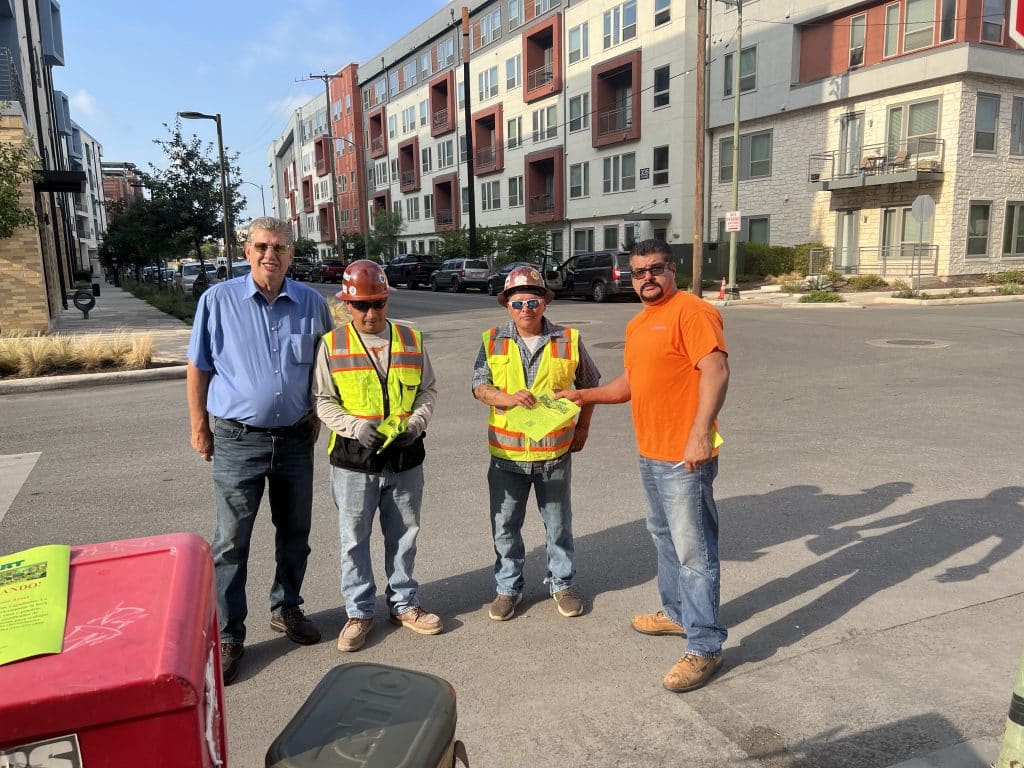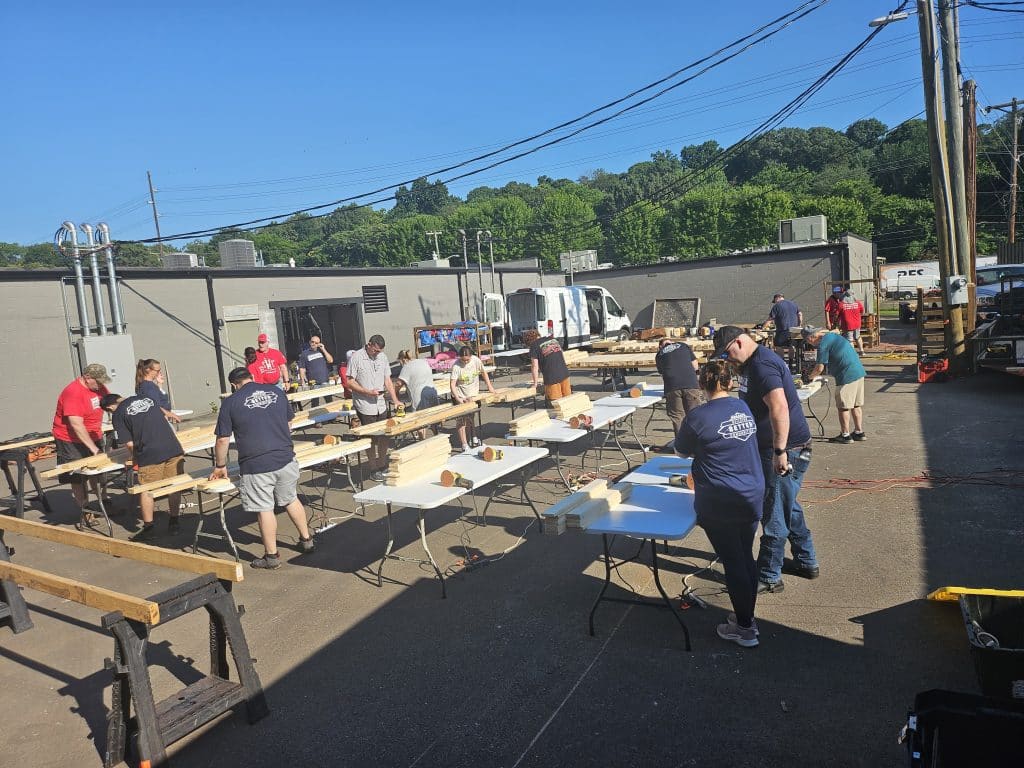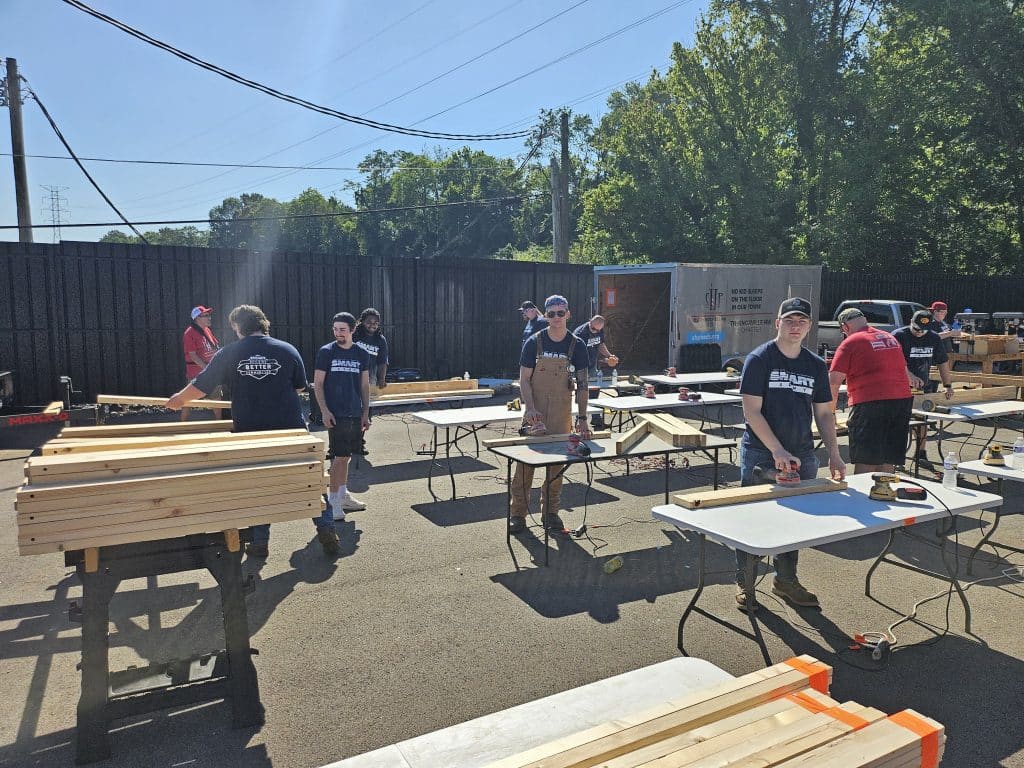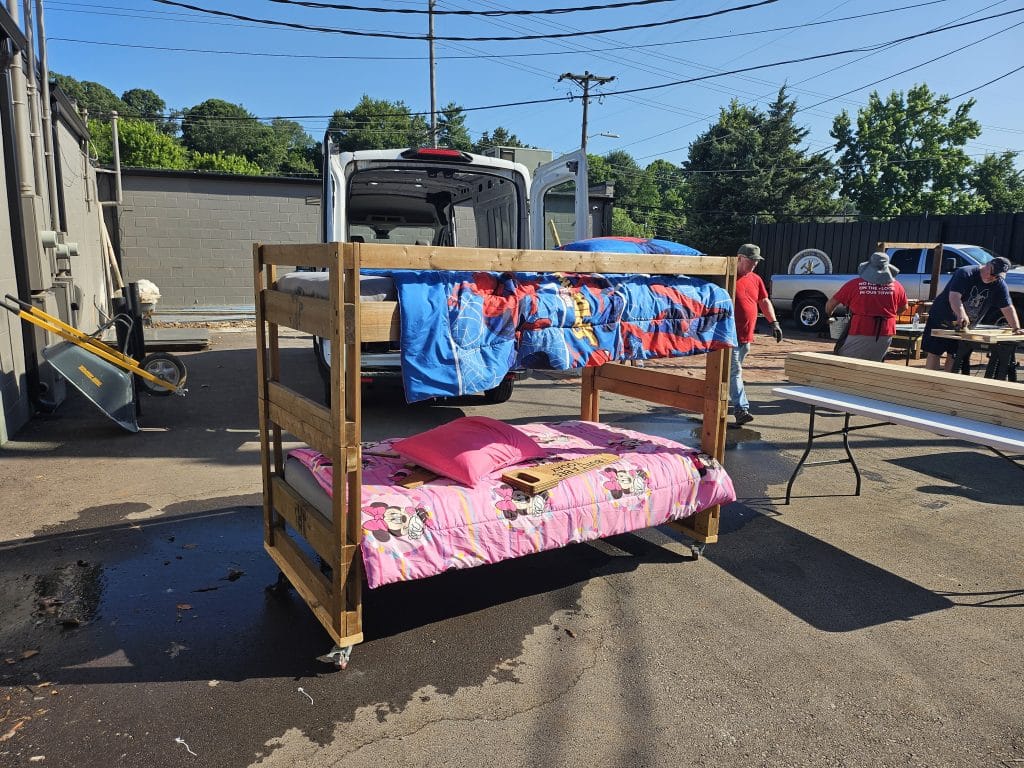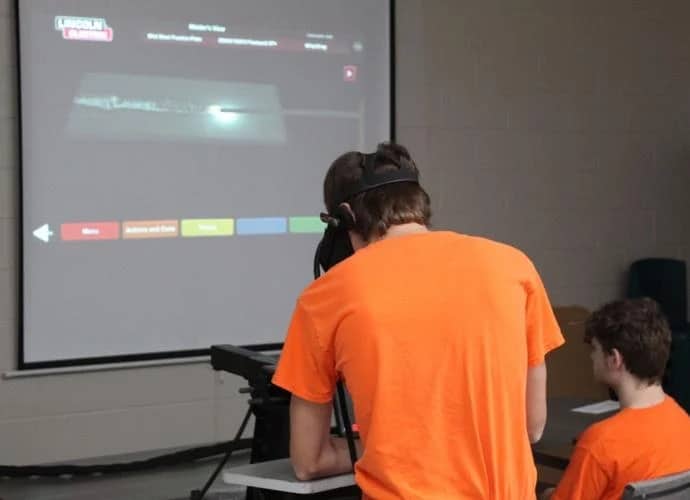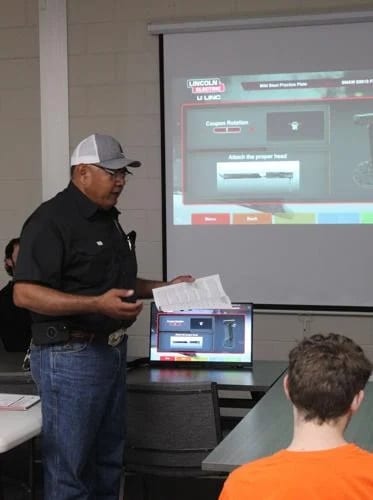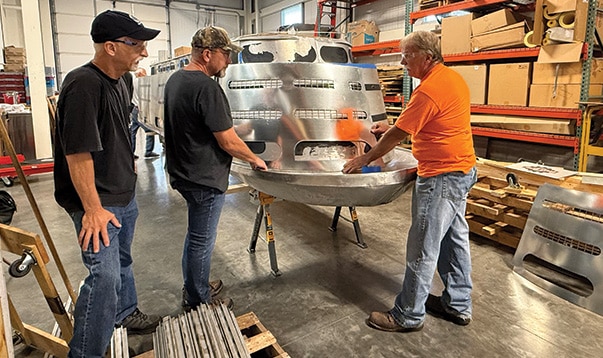On September 22, 2025, SMART-TD, the nation’s largest railroad union, and Union Pacific Railroad, the nation’s largest railroad, announced a historic agreement ensuring job security for thousands of railroad workers as Union Pacific and Norfolk Southern pursue a proposed merger.
This groundbreaking agreement guarantees that SMART-TD members working in train and yardmaster service will have job protection for the length of their careers following the transaction, subject to the usual requirements for continued employment. Union Pacific has committed that these employees will not face involuntary furloughs as a result of the merger. This is an unprecedented guarantee in the history of American railroading.
The result of these protections will reduce disruption to shippers and overall customer service. Therefore, SMART-TD is proud to announce its support for Union Pacific’s proposed merger with Norfolk Southern. This support will be reflected before the Surface Transportation Board in Docket No. 36873, where the union will stand behind the agreement as a model of protecting workers while advancing the industry.
Protecting Workers, Protecting the Supply Chain
SMART-TD entered these negotiations with one primary concern: the job security of the men and women who keep America’s freight moving. This agreement directly addresses that concern. With lifetime job protection, preferential hiring for affected terminal employees, and a commitment to work together on implementing agreements, both parties are ensuring that railroaders and their families will have stability and peace of mind for years to come.
“This is a proud day for our members,” said SMART-TD President Jeremy R. Ferguson. “For generations, railroaders have worried about what mergers might mean for their jobs and whether or not they would be given the opportunity to reach retirement on the rail. Today, we can say with confidence that the biggest railroad and the biggest rail union in America are breaking new ground. We are protecting jobs, protecting families, and protecting the future of the U.S. supply chain. I want to thank Jim Vena, Mark George and their teams for thinking outside the box and putting their employees at ease in unprecedented times. This is a bold agreement, and I’m proud of the mutually beneficial work done here and what Union Pacific, Norfolk Southern, and SMART-TD were able to accomplish.”
“I want to thank SMART-TD for its leadership. When we announced our intent to create the first transcontinental railroad in America, I made a promise to protect the jobs of all unionized employees. Those who have a job when the merger is approved will continue to have one,” said Union Pacific Chief Executive Officer Jim Vena. “I am confident we will unlock new sources of growth for the country and our industry, taking more trucks off taxpayer-funded highways, serving new markets, and keeping more railroad jobs in America.”
“This merger will create opportunities for growth – not just for our business, but for our people. That’s why, from the outset, we made clear that every union employee at the combined company would have a job,” said Norfolk Southern CEO Mark George. “Today’s commitment with SMART-TD takes that promise a step further and reflects our deep appreciation for and confidence in the people who keep our railroads moving every day.”
An Unprecedented Agreement
The agreement stands out as a model of collaboration between labor and management at the highest level. It demonstrates that even in times of great change, industry leaders and unions can come together to secure both economic progress and the livelihoods of working people.
“This is more than a contract — it’s a commitment,” Ferguson added. “It’s proof that when workers and management sit down in good faith, we can build an industry that serves everyone: employees, companies, and the American people who depend on the railroads every day.”
With this agreement, SMART-TD, Union Pacific and Norfolk Southern are leading the way in shaping a stronger future for employees, customers, and the American economy.
###
For more information or to connect with the leadership of the Union Pacific Railroad, Norfolk Southern or the SMART Transportation Division, please contact our communications teams.
About SMART-TD
The Sheet Metal, Air, Rail, and Transportation Workers—Transportation Division (SMART-TD), also known as the SMART-TD Railroad Union, is the largest rail union in North America, representing more than 100,000 workers. We fight for the rights of our members, ensuring that they receive fair wages, safe working conditions, and the benefits they deserve. Our union is committed to standing up for all railroad workers and ensuring that their voices are heard.
SMART-TD Media Inquiries:
Dan Banks
dbanks@smart-union.org
(216) 227-5283 (Office)
(330) 322-5949 (Cell)
About Union Pacific
Union Pacific (NYSE: UNP) delivers the goods families and businesses use every day with safe, reliable and efficient service. Operating in 23 western states, the company connects its customers and communities to the global economy. Trains are the most environmentally responsible way to move freight, helping Union Pacific protect future generations. More information about Union Pacific is available at www.up.com.
Union Pacific Media Inquiries:
media@up.com
About Norfolk Southern
ABOUT NORFOLK SOUTHERN
Since 1827, Norfolk Southern Corporation (NYSE: NSC) and its predecessor companies have safely moved the goods and materials that drive the U.S. economy. Today, it operates a 22-state freight transportation network. Committed to furthering sustainability, Norfolk Southern helps its customers avoid approximately 15 million tons of yearly carbon emissions by shipping via rail. Its dedicated team members deliver approximately 7 million carloads annually, from agriculture to consumer goods. Norfolk Southern also has the most extensive intermodal network in the eastern U.S. It serves a majority of the country’s population and manufacturing base, with connections to every major container port on the Atlantic coast as well as major ports across the Gulf Coast and Great Lakes. Learn more by visiting www.NorfolkSouthern.com
Norfolk Southern Media Inquiries:
Joseph Sala / Lucas Pers
Joele Frank, Wilkinson Brimmer Katcher
(212) 355-4449
No Offer or Solicitation
This communication is for informational purposes only and does not constitute, or form a part of, an offer to sell or the solicitation of an offer to buy any securities or a solicitation of any vote or approval, nor shall there be any sale of securities in any jurisdiction in which such offer, solicitation or sale would be unlawful prior to registration or qualification under the securities laws of any such jurisdiction. No offer of securities shall be made except by means of a prospectus meeting the requirements of Section 10 of the Securities Act of 1933, as amended (the “Securities Act”), and otherwise in accordance with applicable law.
Cautionary Note Regarding Forward Looking Statements
Certain statements in this communication are “forward-looking statements” within the meaning of the “safe harbor” provisions of the Private Securities Litigation Reform Act of 1995, as amended. These statements relate to future events or future financial performance and involve known and unknown risks, uncertainties, and other factors that may cause Union Pacific’s, Norfolk Southern’s or the combined company’s actual results, levels of activity, performance, or achievements or those of the railroad industry to be materially different from those expressed or implied by any forward-looking statements. In some cases, forward-looking statements may be identified by the use of words like “may,” “will,” “could,” “would,” “should,” “expect,” “anticipate,” “believe,” “project,” “estimate,” “intend,” “plan,” “pro forma,” or any variations or other comparable terminology.
While Union Pacific and Norfolk Southern have based these forward-looking statements on those expectations, assumptions, estimates, beliefs and projections they view as reasonable, such forward-looking statements are only predictions and involve known and unknown risks and uncertainties, many of which involve factors or circumstances that are beyond Union Pacific’s, Norfolk Southern’s or the combined company’s control, including but not limited to, in addition to factors disclosed in Union Pacific’s and Norfolk Southern’s respective filings with the U.S. Securities and Exchange Commission (the “SEC”): the occurrence of any event, change or other circumstance that could give rise to the right of one or both of the parties to terminate the definitive merger agreement between Union Pacific and Norfolk Southern providing for the acquisition of Norfolk Southern by Union Pacific (the “Transaction”); the risk that potential legal proceedings may be instituted against Union Pacific or Norfolk Southern and result in significant costs of defense, indemnification or liability; the possibility that the Transaction does not close when expected or at all because required Surface Transportation Board, shareholder or other approvals and other conditions to closing are not received or satisfied on a timely basis or at all (and the risk that such approvals may result in the imposition of conditions that could adversely affect the combined company or the expected benefits of the Transaction); the risk that the combined company will not realize expected benefits, cost savings, accretion, synergies and/or growth from the Transaction, or that such benefits may take longer to realize or be more costly to achieve than expected, including as a result of changes in, or problems arising from, general economic and market conditions, tariffs, interest and exchange rates, monetary policy, laws and regulations and their enforcement, and the degree of competition in the geographic and business areas in which Union Pacific and Norfolk Southern operate; disruption to the parties’ businesses as a result of the announcement and pendency of the Transaction; the costs associated with the anticipated length of time of the pendency of the Transaction, including the restrictions contained in the definitive merger agreement on the ability of Union Pacific and Norfolk Southern, respectively, to operate their respective businesses outside the ordinary course during the pendency of the Transaction; the diversion of Union Pacific’s and Norfolk Southern’s management’s attention and time from ongoing business operations and opportunities on merger-related matters; the risk that the integration of each party’s operations will be materially delayed or will be more costly or difficult than expected or that the parties are otherwise unable to successfully integrate each party’s businesses into the other’s businesses; the possibility that the Transaction may be more expensive to complete than anticipated, including as a result of unexpected factors or events; reputational risk and potential adverse reactions of Union Pacific’s or Norfolk Southern’s customers, suppliers, employees, labor unions or other business partners, including those resulting from the announcement or completion of the Transaction; the dilution caused by Union Pacific’s issuance of additional shares of its common stock in connection with the consummation of the Transaction; the risk of a downgrade of the credit rating of Union Pacific’s indebtedness, which could give rise to an obligation to redeem existing indebtedness; a material adverse change in the financial condition of Union Pacific, Norfolk Southern or the combined company; changes in domestic or international economic, political or business conditions, including those impacting the transportation industry (including customers, employees and supply chains); Union Pacific’s, Norfolk Southern’s and the combined company’s ability to successfully implement its respective operational, productivity, and strategic initiatives; a significant adverse event on Union Pacific’s or Norfolk Southern’s network, including, but not limited to, a mainline accident, discharge of hazardous materials, or climate-related or other network outage; the outcome of claims, litigation, governmental proceedings and investigations involving Union Pacific or Norfolk Southern, including, in the case of Norfolk Southern, those with respect to the Eastern Ohio incident; the nature and extent of Norfolk Southern’s environmental remediation obligations with respect to the Eastern Ohio incident; new or additional governmental regulation and/or operational changes resulting from or related to the Eastern Ohio incident; and a cybersecurity incident or other disruption to our technology infrastructure.
This list of important factors is not intended to be exhaustive. These and other important factors, including those discussed under “Risk Factors” in Norfolk Southern’s Annual Report on Form 10-K for the year ended December 31, 2024 (available at https://www.sec.gov/ixdoc=/Archives/edgar/data/0000702165/000070216525000008/nsc- 20241231.htm) and Norfolk Southern’s subsequent filings with the SEC, Union Pacific’s most recent Annual Report on Form 10-K for the year ended December 31, 2024, as filed with the SEC on February 7, 2025 (available at https://www.sec.gov/ixdoc=/Archives/edgar/data/0000100885/000010088525000042/unp- 20241231.htm) (the “Union Pacific Annual Report”) and Union Pacific’s subsequent filings with the SEC, as well as the risks described in Union Pacific’s registration statement on Form S-4, as filed with the SEC on September 16, 2025 (available at https://www.sec.gov/Archives/edgar/data/100885/000119312525204376/d908896ds4.htm) (the “Registration Statement”), may cause actual results, performance, or achievements to differ materially from those expressed or implied by these forward-looking statements. References to Union Pacific’s and Norfolk Southern’s website are provided for convenience and, therefore, information on or available through the website is not, and should not be deemed to be, incorporated by reference herein. The forward-looking statements herein are made only as of the date they were first issued, and unless otherwise required by applicable securities laws, Union Pacific and Norfolk Southern disclaims any intention or obligation to update or revise any forward-looking statements, whether as a result of new information, future events, or otherwise, except as may be required by applicable law or regulation.
Additional Information About the Transaction and Where to Find It
In connection with the Transaction, Union Pacific filed the Registration Statement with the SEC, which includes a prospectus with respect to the shares of Union Pacific’s common stock to be issued in the Transaction and a joint proxy statement for Union Pacific’s and Norfolk Southern’s respective shareholders (the “Joint Proxy Statement/Prospectus”). The definitive joint proxy statement will be mailed to shareholders of Union Pacific and Norfolk Southern once declared effective. Each of Union Pacific and Norfolk Southern may also file with or furnish to the SEC other relevant documents regarding the Transaction. This communication is not a substitute for the Registration Statement, the Joint Proxy Statement/Prospectus or any other document that Union Pacific or Norfolk Southern may mail to their respective shareholders in connection with the Transaction.
INVESTORS AND SECURITY HOLDERS OF UNION PACIFIC AND NORFOLK SOUTHERN ARE URGED TO READ THE REGISTRATION STATEMENT AND THE JOINT PROXY STATEMENT/PROSPECTUS INCLUDED WITHIN THE REGISTRATION STATEMENT, AS WELL AS ANY OTHER RELEVANT DOCUMENTS FILED WITH THE SEC IN CONNECTION WITH THE TRANSACTION OR INCORPORATED BY REFERENCE INTO THE REGISTRATION STATEMENT AND THE JOINT PROXY STATEMENT/PROSPECTUS (INCLUDING ANY AMENDMENTS OR SUPPLEMENTS THERETO), BECAUSE THEY CONTAIN OR WILL CONTAIN IMPORTANT INFORMATION REGARDING UNION PACIFIC, NORFOLK SOUTHERN, THE TRANSACTION AND RELATED MATTERS.
Investors and security holders of Union Pacific and Norfolk Southern may obtain free copies of these documents and other documents filed with the SEC by Union Pacific or Norfolk Southern through the website maintained by the SEC at https://www.sec.gov or from Union Pacific at its website, https://investor.unionpacific.com/financials/sec-filings, or from Norfolk Southern at its website, https://norfolksouthern.investorroom.com/sec-filings. Documents filed with the SEC by Union Pacific will be available free of charge by accessing Union Pacific’s website at https://investor.unionpacific.com/financials/sec-filings, or alternatively by directing a request by mail to Union Pacific’s Corporate Secretary, 1400 Douglas Street, Omaha, Nebraska 68179, and documents filed with the SEC by Norfolk Southern will be available free of charge by accessing Norfolk Southern’s website at https://norfolksouthern.investorroom.com/sec-filings or, alternatively, by directing a request by mail to Norfolk Southern’s Corporate Secretary, 650 West Peachtree Street NW, Atlanta, Georgia 30308-1925.
Participation in the Solicitation
Union Pacific, Norfolk Southern and certain of their respective directors and executive officers may be deemed to be participants in the solicitation of proxies from the shareholders of Norfolk Southern and Union Pacific in connection with the Transaction under the rules of the SEC.
Information about the interests of the directors and executive officers of Union Pacific and Norfolk Southern and other persons who may be deemed to be participants in the solicitation of shareholders of Union Pacific and Norfolk Southern in connection with the Transaction and a description of their direct and indirect interests, by security holdings or otherwise, is included in the Joint Proxy Statement/Prospectus, which was included in the Registration Statement filed with the SEC on September 16, 2025.
Information about the directors and executive officers of Union Pacific and their ownership of Union Pacific common stock can also be found in the Union Pacific Annual Report, and its definitive proxy statement in connection with its 2025 annual meeting of shareholders, as filed with the SEC on March 25, 2025 (the “Union Pacific 2025 Proxy Statement”) and other documents subsequently filed by Union Pacific with the SEC, which are available on its website at www.up.com. Information about the directors and executive officers of Union Pacific, their ownership of Union Pacific common stock, and Union Pacific ’s transactions with related persons is set forth in in the sections entitled “Proposal Number 1 – Election of Directors— Directors/Nominees”, “Director Compensation in Fiscal Year 2024”, “Proposal Number 3 – Advisory Vote to Approve Executive Compensation”, “A Letter From Our Compensation and Talent Committee” and “Compensation Discussion and Analysis” of the Union Pacific 2025 Proxy Statement. To the extent holdings of Union Pacific common stock by the directors and executive officers of Union Pacific have changed from the amounts of Union Pacific common stock held by such persons as reflected therein, such changes have been or will be reflected on Statements of Change in Ownership on Form 4 filed with the SEC, which are available at https://.sec.gov/edgar/browse/?CIK=100885&owner=exclude under the tab “Ownership Disclosures”.
Information about the directors and executive officers of Norfolk Southern and their ownership of Norfolk Southern common stock is also set forth in the definitive proxy statement for Norfolk Southern’s 2025 Annual Meeting of Shareholders, as filed with the SEC on Schedule 14A on March 28, 2025 (which is available at https://www.sec.gov/ix?doc=/Archives/edgar/data/0000702165/000119312525066914/d892357 ddef14a.htm), and other documents subsequently filed by Norfolk Southern with the SEC. Information about the directors and executive officers of Norfolk Southern, their ownership of Norfolk Southern common stock, and Norfolk Southern’s transactions with related persons is set forth in the sections entitled “Norfolk Southern Director Nominees”, “Corporate Governance and the Board—Item 1: Election of 13 Directors for a One-Year Term”, “Corporate Governance and the Board—Director Nominees”, “Corporate Governance and the Board—Compensation of Directors”, “Executive Compensation” and “Stock Ownership Information” of such definitive proxy statement. Please also refer to Norfolk Southern’s subsequent Current Report, as filed with the SEC on Form 8-K on June 3, 2025 (which is available at https://www.sec.gov/ix?doc=/Archives/edgar/data/0000702165/000119312525133796/d35291d 8k.htm), regarding subsequent changes to Norfolk Southern’s Board of Directors following the filing of such definitive proxy statement. To the extent holdings of Norfolk Southern common stock by the directors and executive officers of Norfolk Southern have changed from the amounts of Norfolk Southern common stock held by such persons as reflected in the definitive proxy statement, such changes have been or will be reflected on Statements of Change in Ownership on Form 4 filed with the SEC, which are available at https://www.sec.gov/edgar/browse/?CIK=702165&owner=exclude under the tab “Ownership Disclosures”.
Free copies of these documents may be obtained as described above.

